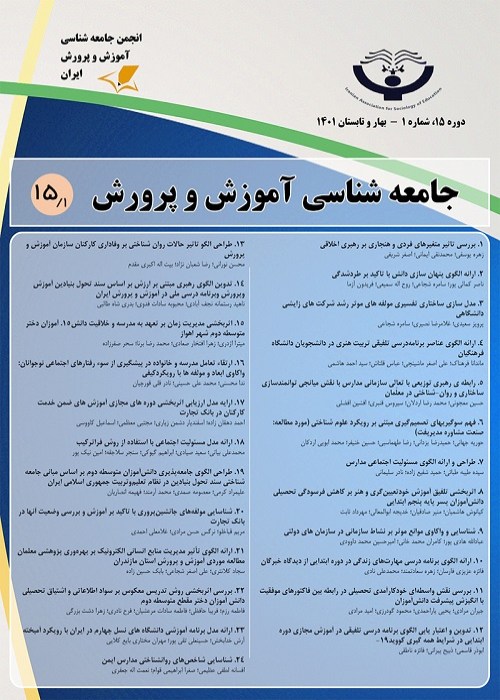Designing a Model and Validating of Information Literacy in the Curriculum of Senior School Students
Considering the importance of information literacy in today's era and the need to include it in the curriculum of students, the present research was conducted with the aim of designing a model and validating of information literacy in the curriculum of senior school students.
This study in terms of purpose was applied and in terms of implementation method was mixed (qualitative-quantitative). The research population in the qualitative section was the experts of curriculum and information literacy education of Tehran city in the 2023 year, which number of 16 people of experts (according to the principle of theoretical saturation) were selected as a sample with using the purposeful sampling method. The research population in the quantitative section was the senior school students of Tehran city in the 2022-2023 academic years, which number of 400 people of them were selected as a sample with using the multi-stage cluster sampling method. The research tools were semi-structured interviews by experts and completion of researcher-made questionnaires by students, which whose psychometric indicators were confirmed. The data were analyzed by coding methods and exploratory factor analysis.
Based on the findings of coding interviews for information literacy in the curriculum of students were identified 40 components in 7 dimensions including information access and retrieval, information evaluation, information organization and combination, information ethical considerations, information communication and sharing, cognitive factors of information literacy learning and motivational factors of information literacy learning. Also, the results of the exploratory factor analysis showed that 13 components could explain 81% and all 40 components could explain 100% of the variance of information literacy in the curriculum of students, the factor loading of all 40 components was above 0.70 and information literacy in the curriculum of students on the 7 dimensions and each dimension on its components had a direct and significant effect (P<0.001). Therefore, the designed model of information literacy in the curriculum of students was valid.
Based on the results of this study, in order to improve information literacy in the curriculum of students it is possible to provide the basis for realizing the identified dimensions and components.
- حق عضویت دریافتی صرف حمایت از نشریات عضو و نگهداری، تکمیل و توسعه مگیران میشود.
- پرداخت حق اشتراک و دانلود مقالات اجازه بازنشر آن در سایر رسانههای چاپی و دیجیتال را به کاربر نمیدهد.


